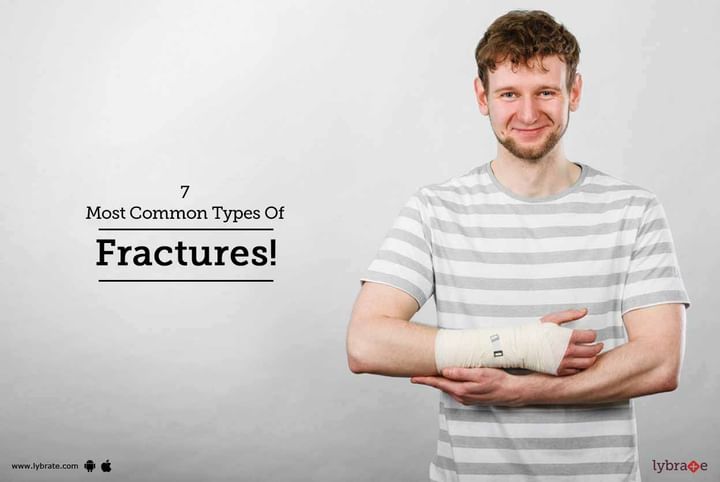7 Most Common Types Of Fractures!
A broken bone is medically known as a fracture. Age plays a major role in determining the risk and extent of your fracture. In children, broken bones are common place. Children’s fractures are generally less complicated and easier to treat than those in adults. Brittle bones due to calcium weaning away is more pronounced in adults. Bones in general become weaker as you age as decalcification occurs as the bones start undergoing resorption.
Till the time a child turns 18, the bone density keeps increasing if sufficient calcium intake continues. On the other hand, when you turn into an adult, the density can’t increase despite sufficient calcium intake. On the other hand, calcium ions get slowly released into the blood stream if there is inadequate consumption of calcium containing foods.
The main categories of fractures based on damage to the surrounding tissues are non-displaced, displaced, open and closed. Non-displaced and displaced fractures refer to the manner in which the bone has broken. The bone breaks into more than one component in displaced fractures and both ends move in such a way that they are not in proper alignment. In a comminuted fracture, the bone breaks into many pieces.
Non-displaced fractures involve the cracking of a bone in its entirety or a part of it, but there isn’t much movement and it maintains proper alignment. A bone breaks in a closed fracture but there isn’t any open wound relating to the skin. The bone breaks past the skin in an open fracture. It might then recede back into the trauma and not be seen through the skin. There is a risk of a deep bone infection in an open fracture and this is an important difference from a closed fracture.
Some fractures based on how and the extent of the breakage include:
- Greenstick: It is a partial or incomplete fracture in which the bone bends. This is most often seen in children.
- Transverse fracture: It is a fracture in which the broken piece of bone is at right angles to the bone's axis.
- Oblique fracture: Such a fracture involves a curved or sloped pattern in the breaking point.
- Comminuted fracture: The bone gets broken into several pieces.
- Buckled fracture: It is also known as an impacted fracture. The ends are driven into each other. This is very common in arm fractures in children.
- Pathologic fracture: It is caused by any disease that can weaken the bones.
- Hairline Fracture: Also known as stress fracture, it is seen on an x ray as a thin line.



+1.svg)
